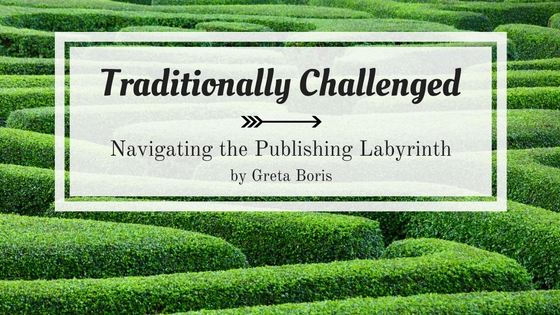Twitter pitches have helped me fight my way through logline hell. Every author I know hates to write loglines—at least for their own stories. I’m no exception. But before I get into all that, let me convince you the outcome is worth the effort.
I once participated in an Author Idol contest at a writers conference. Contestants dropped the first page, or 250 words, of their story into a basket on the way in the door. A panel of agents and editors were assembled up front. When the room was filled with fifty or so sweaty writers, a narrator walked to the microphone, picked a page from the basket and began reading.
As soon as an editor or agent lost interest, he raised his hand. When three or more had their hands up, the narrator moved on to the next selection. It was brutal. Often hands shot up after the first sentence. Only five out of the thirty entries read were ever finished.
What does this say about beginnings?
Beginnings set the tone, make a promise, predict the future. Beginnings are arguably the most important part of any story. Including yours. But before anyone reads the opening line of your manuscript, you have to catch them with your logline. [clickToTweet tweet=”Beginnings may be the hook, but loglines are the bait. It takes both to snag a reader.” quote=”Beginnings may be the hook, but loglines are the bait. It takes both to snag a reader.”]
Ask an author what her work in progress is about and watch her face. Her eyes glaze over. Her mouth tightens into a thin line. Her jaw clenches. She’s in fight or flight mode. She begins to stammer out the opening scene of the book, and you lose interest. All you want to hear is the premise. You want the logline.
How do you tease a logline out of your story?
There are entire classes taught on this subject, so forgive me if this seems simplistic. I can only tell you how I’ve done it.
Step 1 – Answer these questions:
- Who is my story about? I don’t want her name. I want her occupation, her place in life, why you chose her as your protagonist.
- What does he want that he doesn’t have? If he doesn’t want something that seems unattainable, you don’t have a story.
- What’s stopping her from getting it? Conflict. Gotta have it.
- Where does the story take place? This is optional. For some stories setting is really important. For others, not so much.
Example:
Here’s how I answered those questions from my book, A Margin of Lust.
- An ambitious real estate agent
- To sell the expensive listing she just acquired, success, prestige
- Someone keeps sabotaging the sale
- Laguna Beach, Orange County, California
Step 2 – Create one sentence, or a few short sentences, using the answers to the questions.
There are a lot of ways I could go with my information. Here are a few:
- Every time an ambitious real estate agent puts her Laguna Beach, ocean view listing on the market, something goes horribly wrong.
- An ambitious real estate agent lands a multi-million dollar listing, and winds up in a battle with a mysterious force bent on sabotaging the sale.
- An O.C. Realtor has two big fears: claustrophobia and being buried in suburban obscurity. When she finds the body of a fellow agent she ought to develop a third. Someone’s stalking her.
How do I know which bait is best?
Twitter Pitches
This is where Twitter Pitches come in. What better way to test your logline than on a day where you’re free to send 140 character descriptions of your novel out at regular intervals to industry professionals?
Here’s how they work.
Someone, usually another author, contacts a list of editors and agents and asks them if they’ll agree to check a certain hashtag on a certain day during certain hours. Writers tweet their descriptions using the hashtag. (Which uses some of your 140 characters, by the way.) These professionals then hit the like button on your tweet if they want you to send them a full query. This is how I got a contract with my publisher, Fawkes Press.
Each contest has its own rules about how many and when, but everyone I’ve seen recommends you change your pitch each time. This gives you a chance to see which bait attracts the most fish. I’ll provide a few links at the end of this post to Twitter Pitch contests. I know you’re squirming in your seat with your hand up. Patience.
Now, back to the story.
Here’s the pitch that got me five requests for full queries, two requests for full manuscripts and ultimately a contract:
A real estate agent’s new Laguna Beach listing is perfect, except for the body upstairs and what’s hidden in the cellar.
Why this one? I don’t know. It’s not my favorite. I like all that suburban obscurity stuff better. But if bread balls catch more fish than night crawlers, what are you going to use?
Query Letters and Book Descriptions
I’m not going to write much about query letters here. That’s a whole different post, but I will say this: You can use your winning Twitter pitch as the logline for your query letter with a few modifications. Now that you’re no longer restricted to 130 – 135 characters, it almost seems easy. Here is how mine morphed:
An ambitious real estate agent’s multi-million dollar, Laguna Beach, ocean view listing would be perfect if it wasn’t for the body in an upstairs bedroom and the secret hidden in the cellar.
I was able to use some of favorite phrases in the longer description of the story and for the final book description that’s now on my website.
Here are a couple of links to contest schedules:
http://www.brenda-drake.com/contest-schedule/
http://carissa-taylor.blogspot.com/2013/01/contest-madness.html
Good luck and start pitching!
***

Greta Boris Director
Greta Boris is the author of the 2017 releases, A Margin of Lust and The Scent of Wrath, the first two books in her 7 Deadly Sins domestic suspense series.
She’s published articles on culture, health, and entertainment for a variety of national magazines including Victorian Homes, Zombies, 50 Scariest Movies, Exodus, and Women of the Bible. She’s also the author of the Amazon Kindle Bestseller The Wine and Chocolate Workout – Sip, Savor, and Strengthen for a Healthier Life.
You can visit her at http://gretaboris.com. She describes her work (and her life) as an O.C. housewife meets Dante’s Inferno.
*O.C. Writers is a participant in the Amazon Services LLC Associates Program, an affiliate advertising program designed to provide a means for us to earn fees by linking to Amazon.com and affiliated sites. By clicking on the book links anywhere on this site, we earn a small commission from your purchase.



Tweeted and bookmarked this post. A goldmine of help.
So glad, Michelle!
Great advice. I just figured out the next tag line for my book! I too have gotten requests on a previous tag lines via Twitter. I am amazed how many authors don’t know about this! But my point, I was surprised at what “bait” worked and what didn’t.
It is surprising, isn’t it Elizabeth? Even marketing professionals make mistakes and have to test things. The recent Kardashian Coke commercial screw up being a classic example!